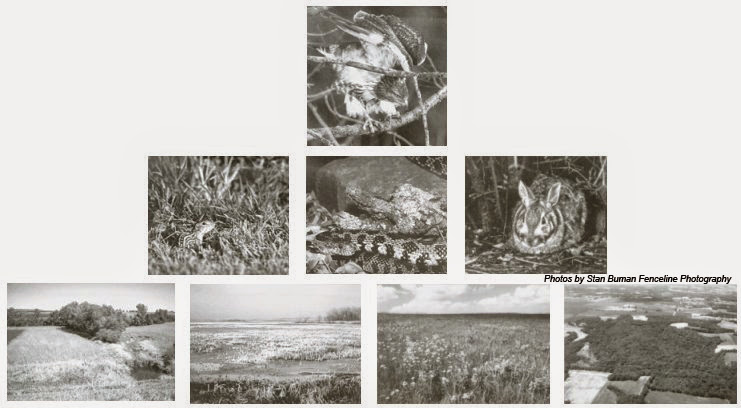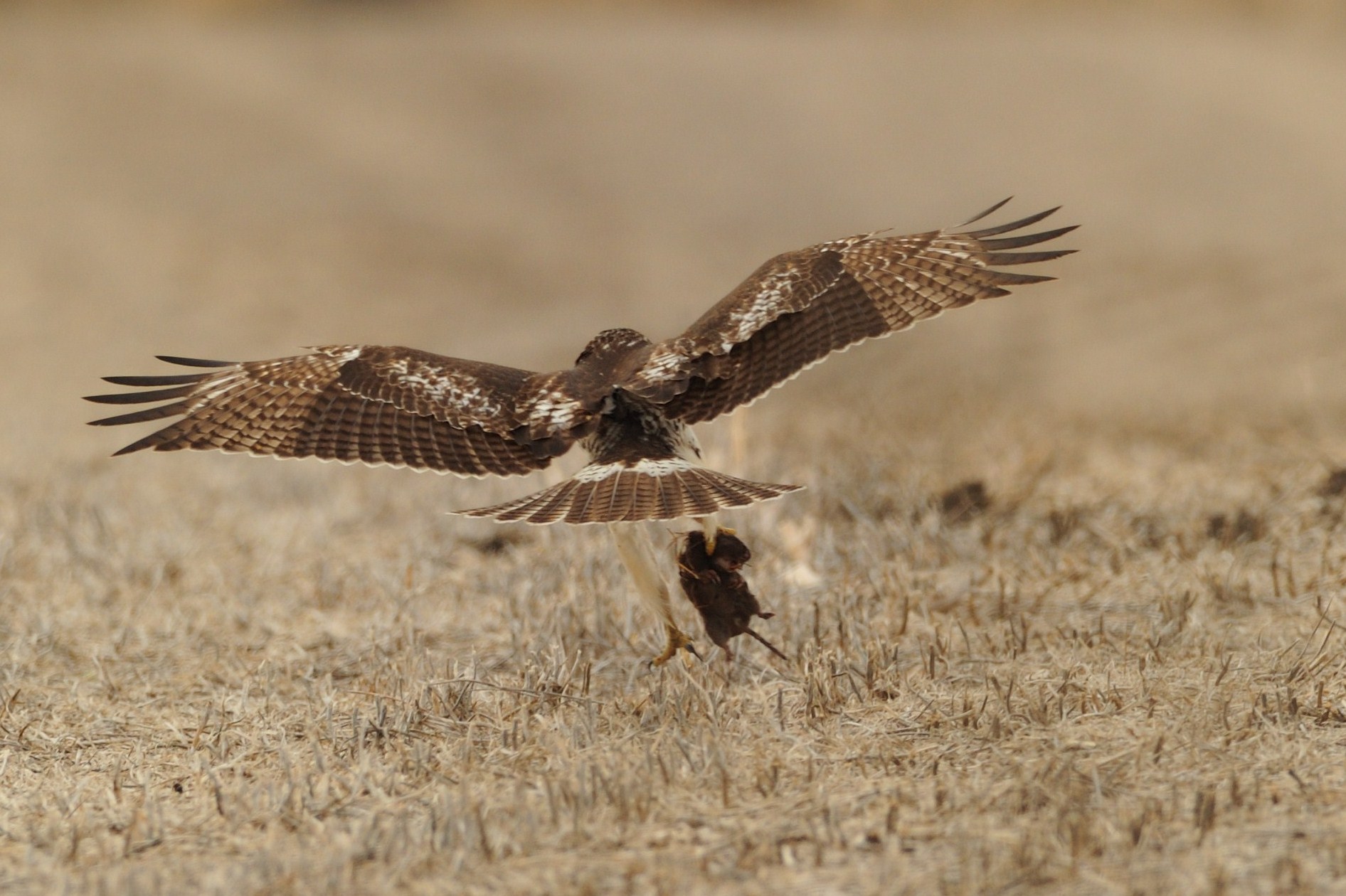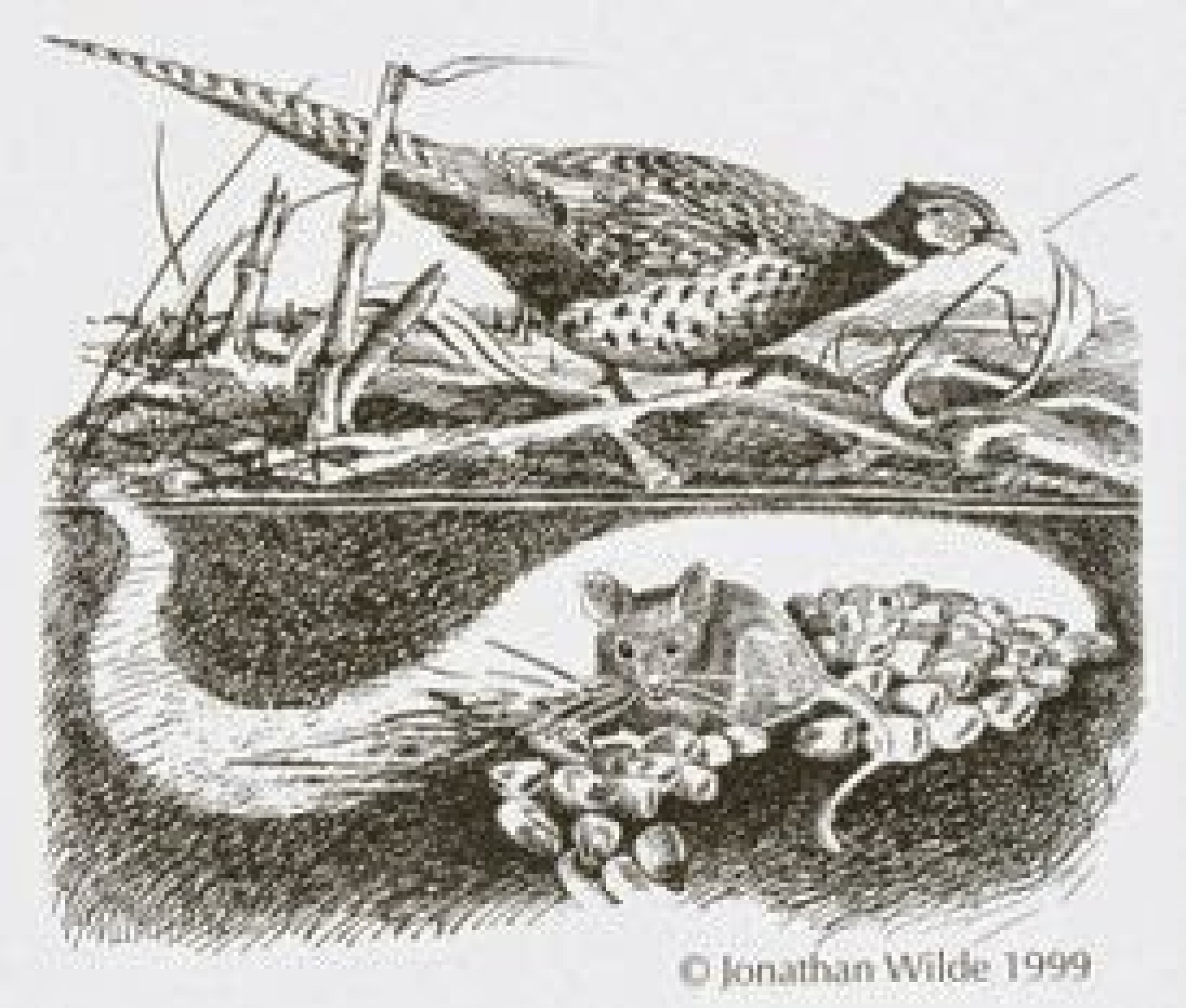Predators and Prey - In Balance
Marla Mertz, Marion County Conservation, and Linette Bernard, Feathers & Ink
The sequence of energy moving from producer (plant) to consumer (insectivore, herbivore, and carnivore) to decomposer is a food chain. A food chain can also be described as a system of organisms each dependent on the previous as a source of food.
Try this Food Chain Stacking Cups activity to visualize a food chain!
This concept is important in understanding the energy and food relationships of those in the food chain. Many food chains weave and cross paths to form a food web.

A food web is a network of food chains or feeding relationships by which energy and nutrients are passed from one living organism to another. Food webs are always changing. The balance between predator, prey, and the prey’s food is ever-changing. This balance is impacted by the population of each member of the food web, the richness or diversity in the food web members, the quantity and quality of habitat and the availability of the components of habitat, plus seasonal variability. Limiting factors will also impact the viability of the food web through animal or plant disease, extreme weather patterns that cause drought, flooding, or fire, plus animal-human interactions. Any of these limiting factors impact can impact one organism in the food web and the ripple effect will impact all organisms!
Raptors as a top predator
Let’s look at raptors in the food web, with the red-tailed hawk being the top or apex predator. You can also think of a food web as a balancing act in the shape of a pyramid.
- The top of the pyramid is the predator, the hawk.
- The middle of the pyramid is the prey species -- ground squirrel, snake, and rabbit.
- The base of the pyramid is habitat.
A food web model offers a very simplistic picture of the relationships between each member of that web.

If you remove the predators at the top of the pyramid, will there be more room for prey in the middle? No. But removing a predator could temporarily allow a higher survival of more young, old, or sick individuals. Temporarily is the key word. What happens if you try to squeeze another rabbit block into the prey level of the pyramid? The addition puts the pyramid out of balance - something will crash.

This illustrates how prey species can "eat themselves out of house and home" and may cause population crashes. The habitat can support only a limited number of rabbits. This is the habitat's carrying capacity for rabbits.
Predators keep prey in balance at or near the carrying capacity of their habitat. Without a balancing predator, prey populations can go through huge number fluctuations and can cause an unpredictable chain reaction of events.
Here's some possible reactions.
- Mice are the main ingredient in a red-tailed hawk's diet. Rodents have an amazing reproductive potential. With an average litter size of eight and becoming mature at eight weeks, two mice can turn into more than 2,000 in only six months. This can happen only when all limiting factors are removed.
- What might happen if rodents were temporarily out of balance? More rodents could compete with game birds and other animals for a limited food supply of seeds, especially in the winter.
- What might happen if egg predators like snakes and ground squirrels were temporarily out of balance? Ground-nesting birds could experience a higher rate of egg loss. They may need to make more re-nesting attempts or they might not have a successful brood.
What could you do to the pyramid if you wanted to increase the number of prey animals in the middle (rabbits, etc.) AND keep the pyramid stable and balanced, avoiding any undesirable chain reactions? The answer is to expand the habitat base, keeping the predators in place. With a larger base, more prey can be added and more predators too - to keep the balance.
Protected Predators Keep the Balance
Wolves and the Greater Yellowstone Ecosystem
After being absent from the greater Yellowstone ecosystem for 70 years, a wolf reintroduction program began in 1995. Putting the wolves back in the ecosystem, started to reduce elk numbers and changed the behavior of the elk. The elk moved out of the valley to be more in the safety of the trees. As the elk spent less time in the valley browsing aspens and cottonwoods, the young trees could grow. More trees stabilized the rivers and creeks. Then the beaver moved in and built dams and slowed the water. The transformation is amazing.
Watch this 4:30 minute video to get the synopsis of how Yellowstone has been changed in the last 20 years. From this video’s description: “NOTE: There are "elk" pictured in this video when the narrator is referring to "deer." This is because the narrator is British and the British word for "elk" is "red deer" or "deer" for short. The scientific report this is based on refers to elk so we wanted to be accurate with the truth of the story.”
Click to see photos of Yellowstone National Park from our own Ron Huelse in Google Photos.
But it’s not just wolves in Yellowstone that are making an impact to improve habitat. Read “Yellowstone Ecosystem Needs Wolves and Willows, Elk and...Beavers?” where scientists make the connection between beaver and wolves.
Read more about the benefits of beavers here from PBS!
An ecosystem really is a balancing act where all the parts must be in the correct number and location. A quote from Aldo Leopold says it best, “If the land mechanism as a whole is good then every part is good, whether we understand it or not...To keep every cog and wheel is the first precaution of intelligent tinkering.”
For decades, folks have lived on the land, but not with the land simply because we have not understood all the parts. Living with the land is much different and is really a shift in thinking. The conservation ethic that Aldo Leopold wrote about in “A Sand County Almanac” is likely an influence on the wildlife biologists and researchers working to restore ecosystems like Yellowstone. To learn more about Aldo Leopold, watch this trailer from The Green Fire Film Project.
YouTube Video
https://youtu.be/iQED4YEMx9A Green Fire
published Wednesday, December 1, 2021



